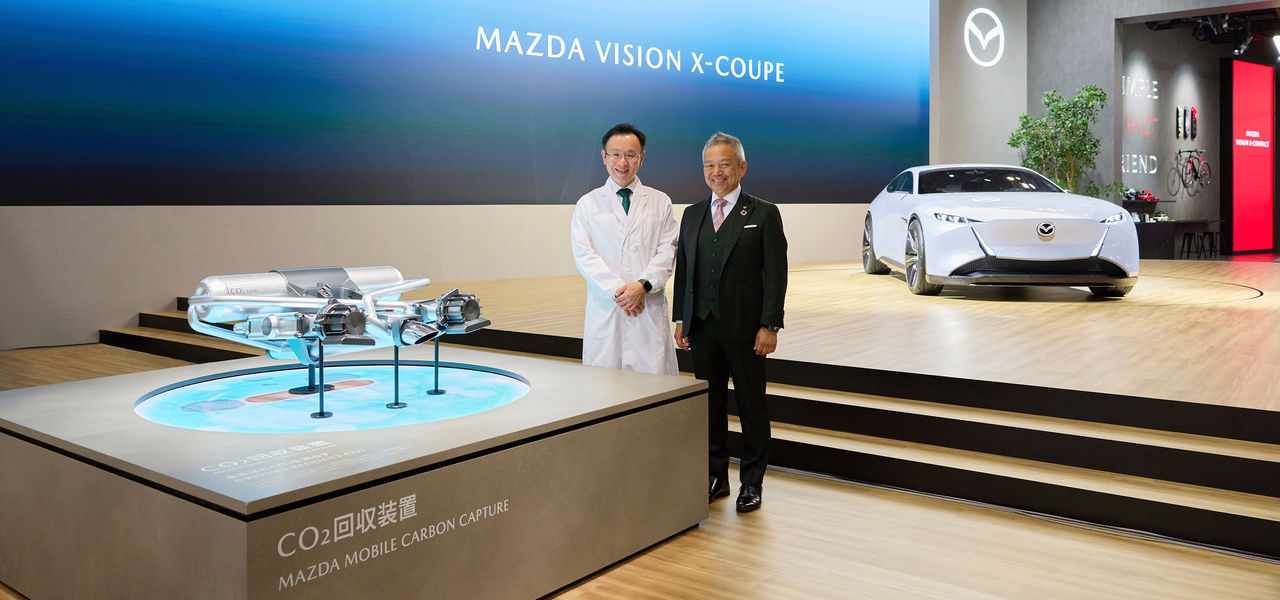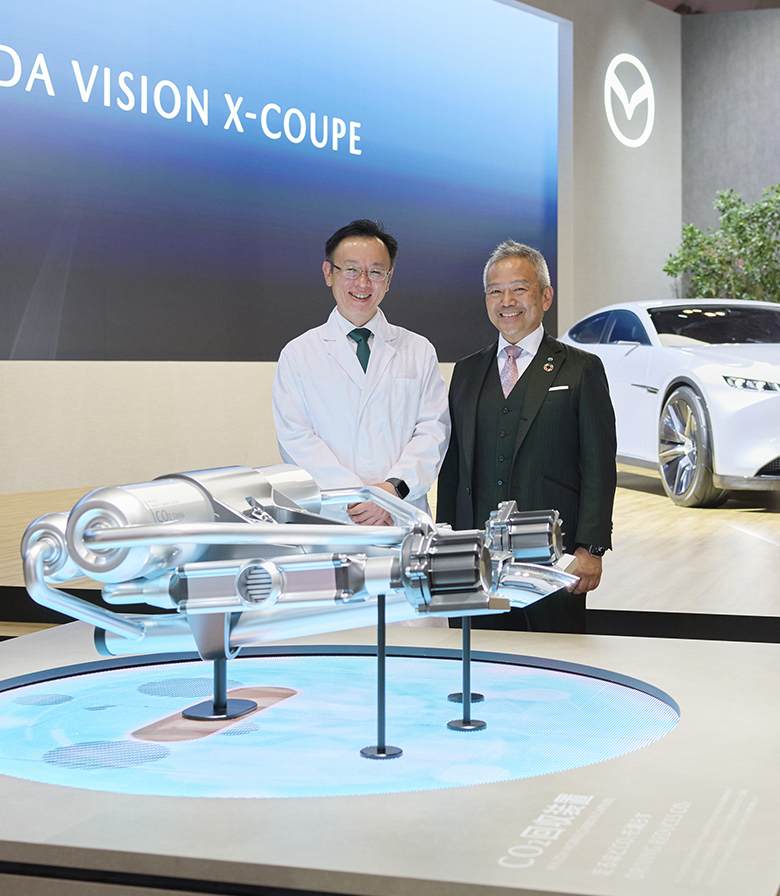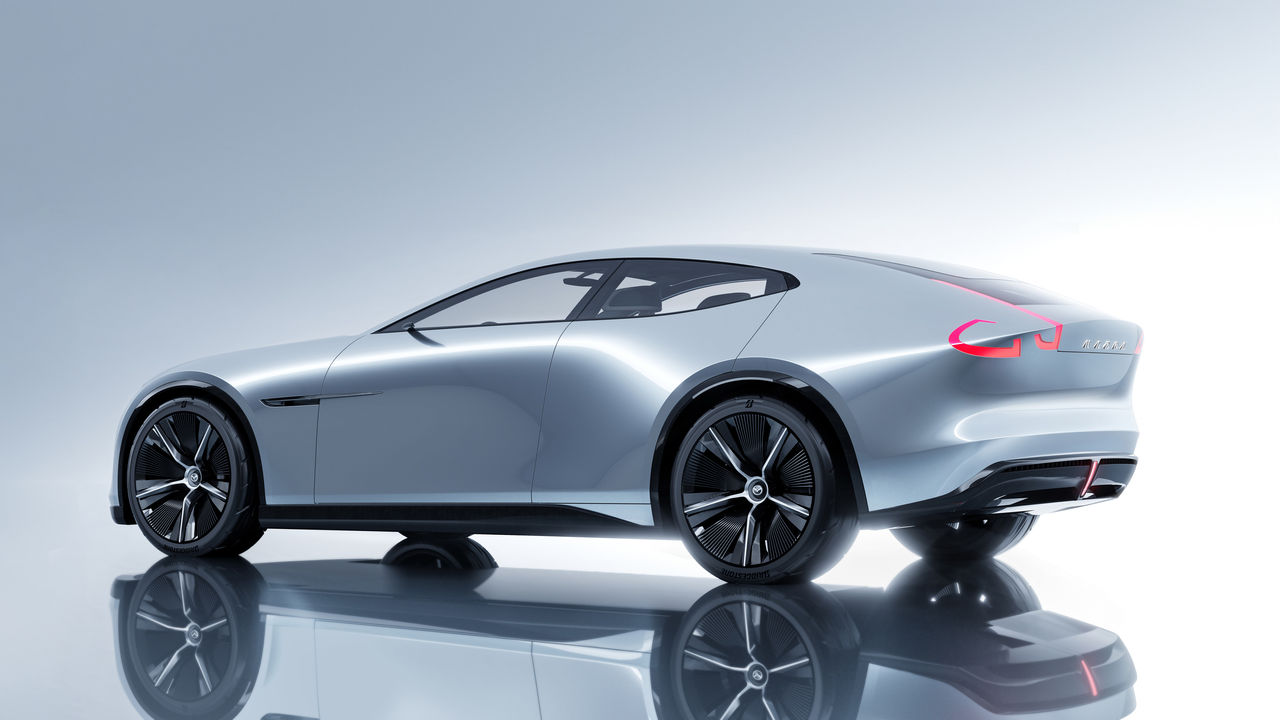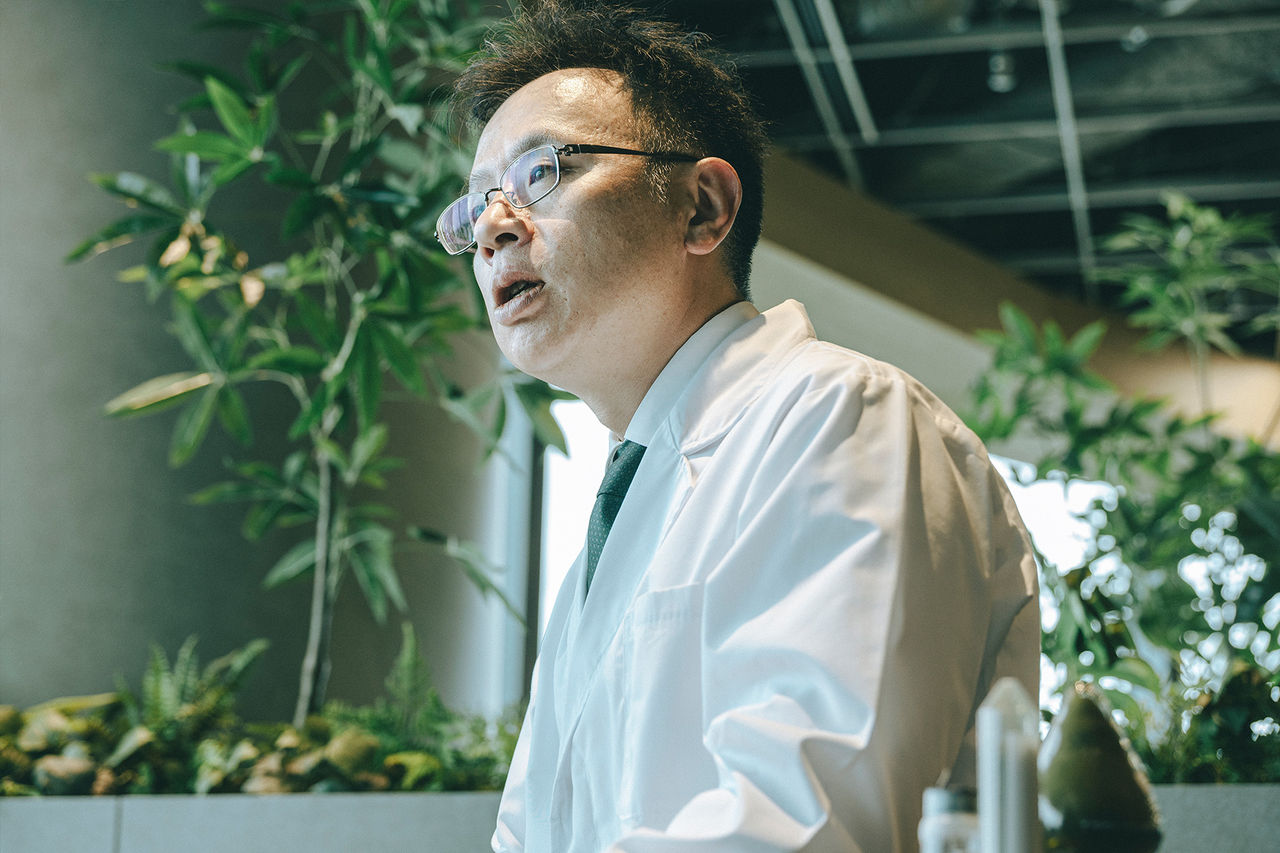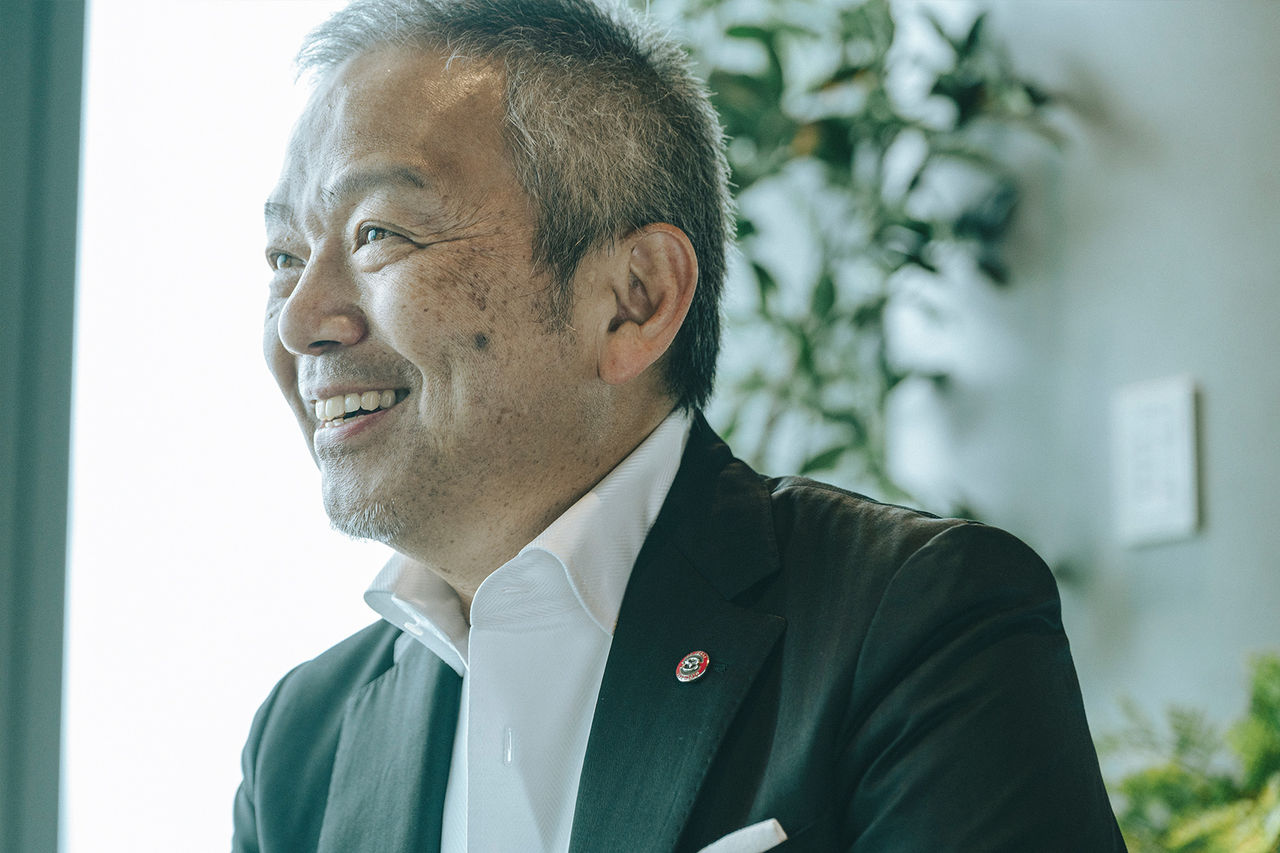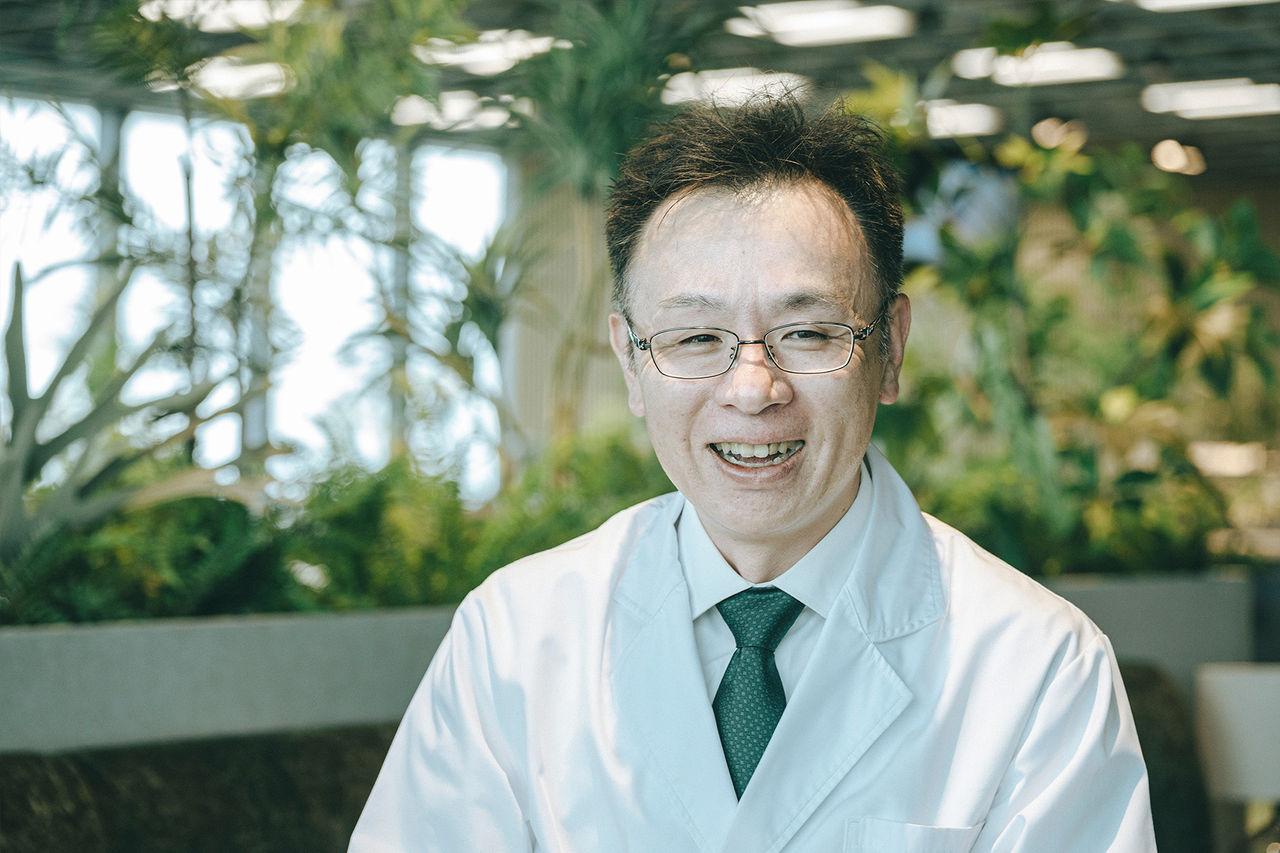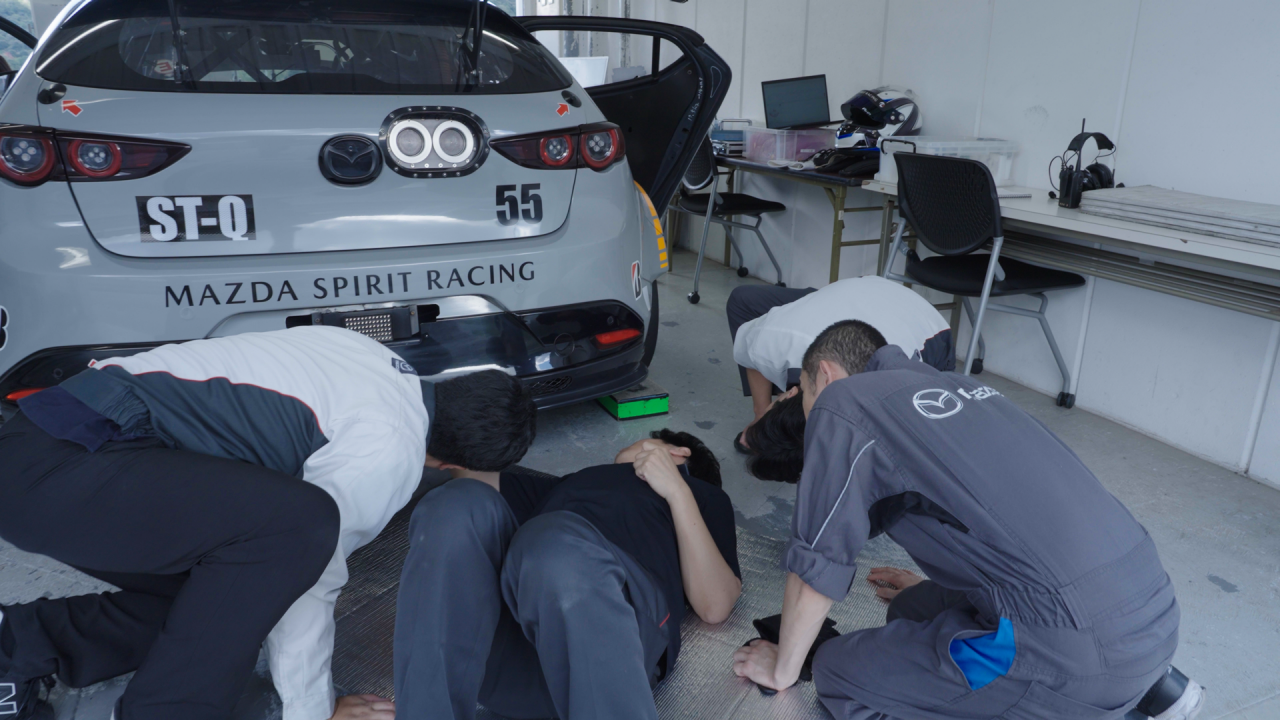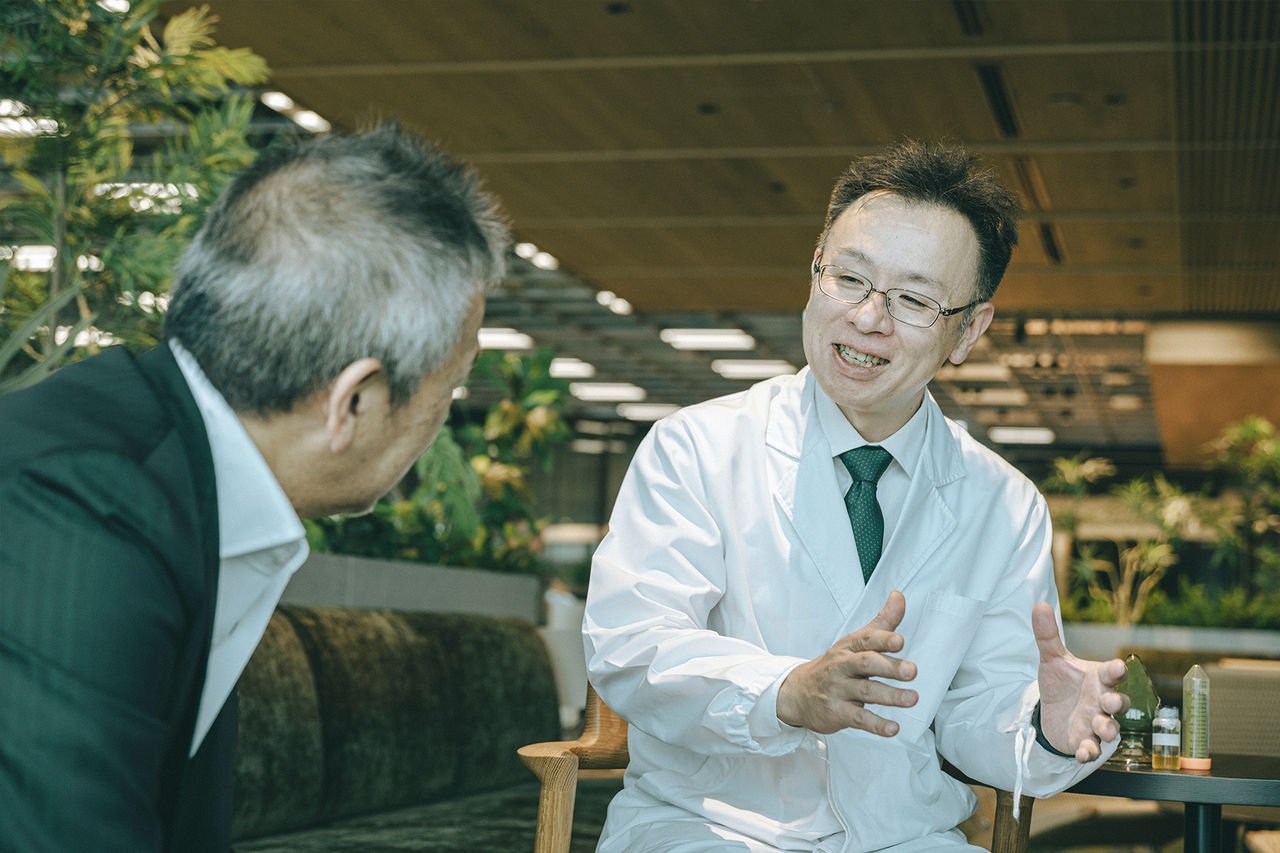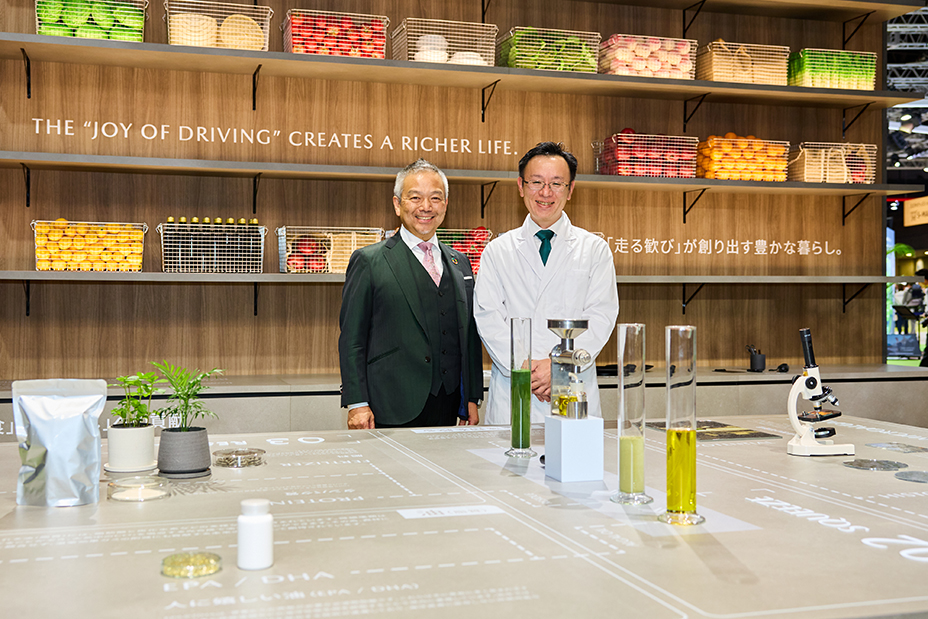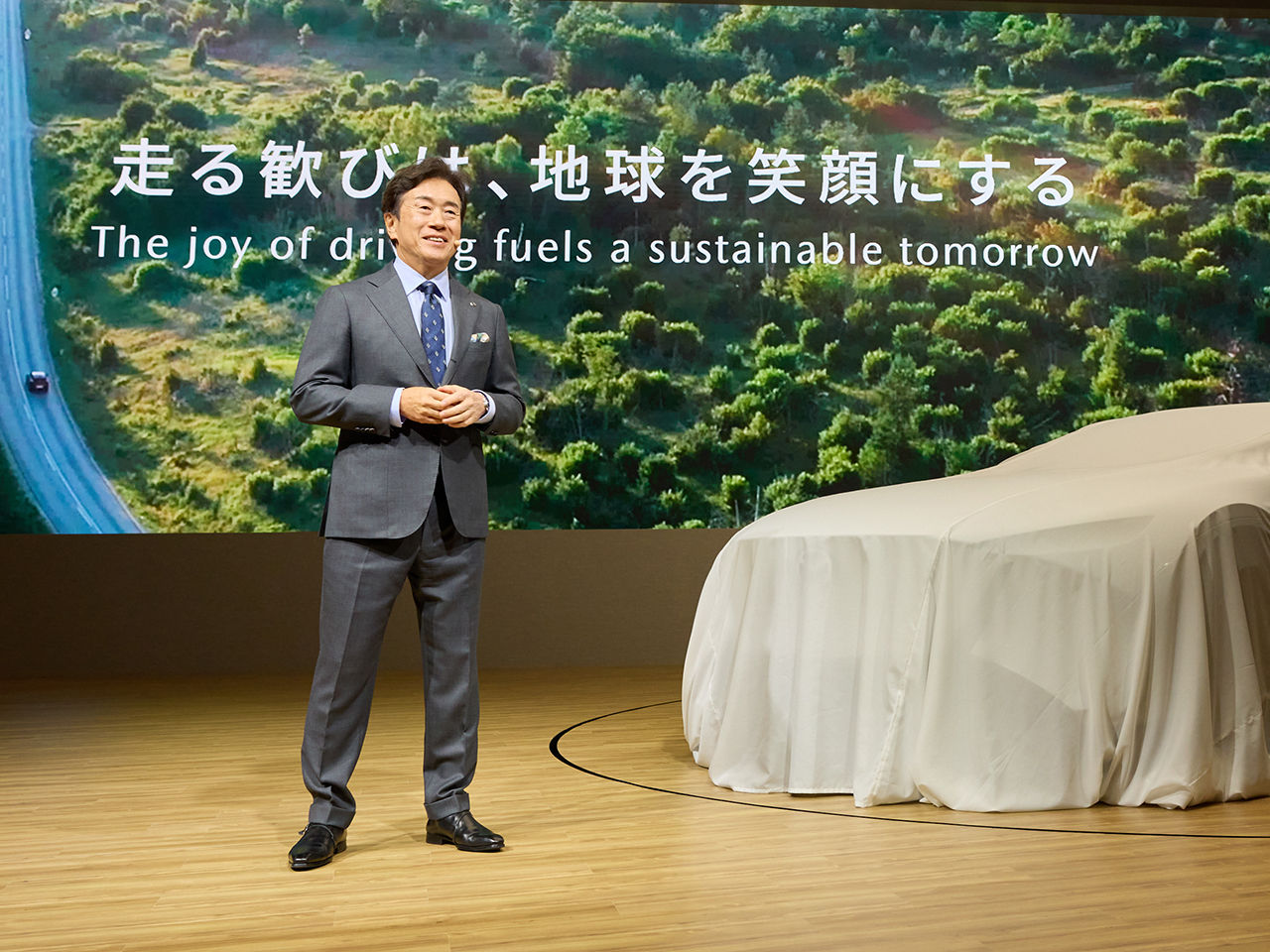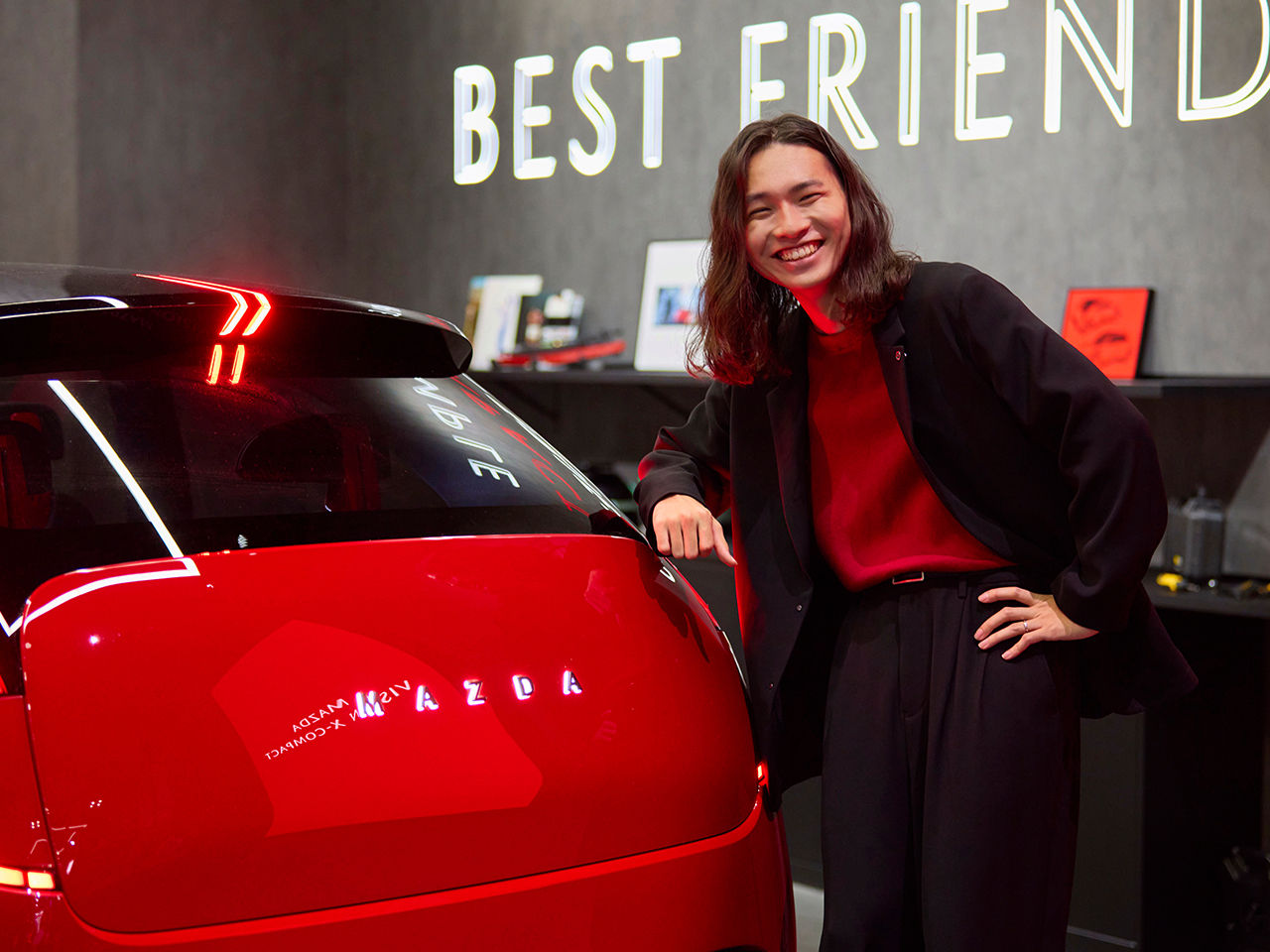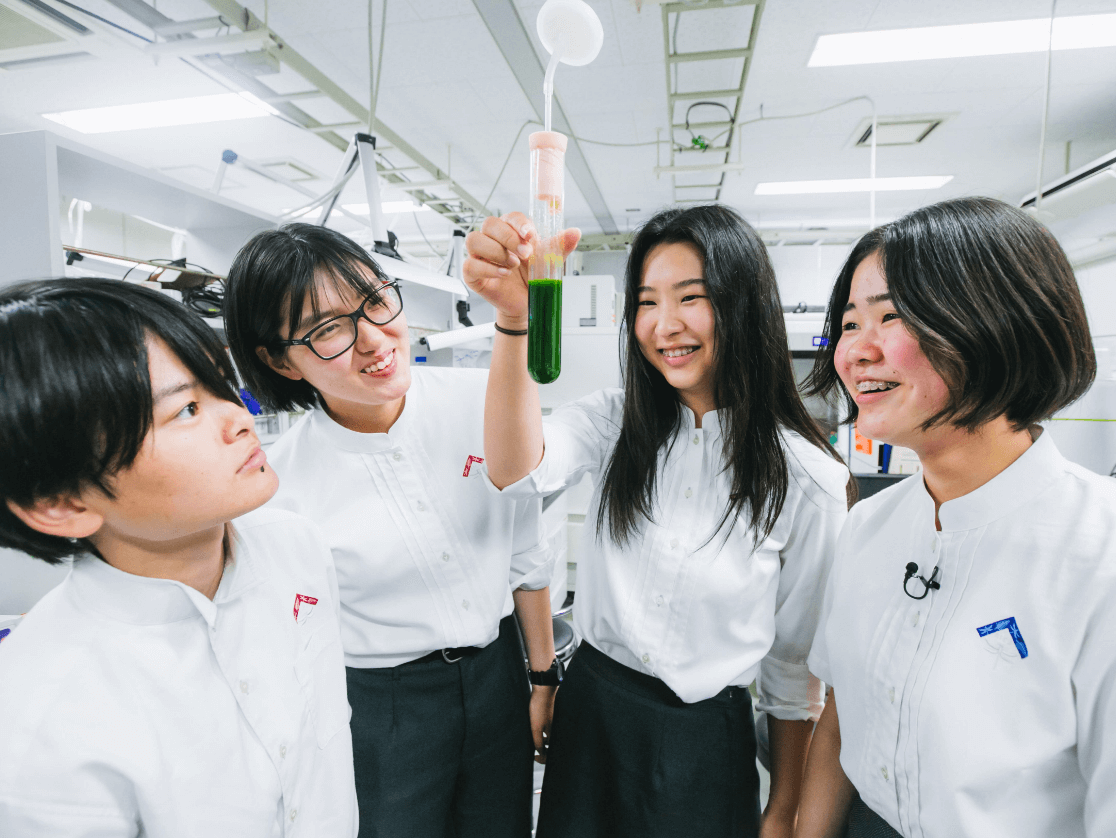The more you drive, the more you reduce CO₂. Mazda is charting a path to make this future real.
At Japan Mobility Show 2025, Mazda unveiled the Mazda Vision X-Coupe. Powered by a plug-in hybrid system integrating a two-rotor rotary turbo engine with a motor and battery, this vision model embodies Mazda’s belief that the joy of driving can be a force for positive change for society and the planet, and a commitment to delighting those who are passionate about cars now and for generations to come.
What if you could drive as much as you wanted and actually make the planet cleaner? We spoke with Ryuichi Umeshita, Mazda’s Chief Technology Officer (Senior Managing Executive Officer and CTO), and Kazuo Ichikawa from the Advanced Environmental Technology Research Field, who researches carbon-neutral fuels. Both passionate car enthusiasts, what did they envision with the Mazda Vision X-Coupe? What needs to be done to make “The Joy of Driving Fuels a Sustainable Tomorrow,” Mazda’s theme for Japan Mobility Show 2025 (JMS 2025), a reality? And what does the future of mobility look like once we get there?
